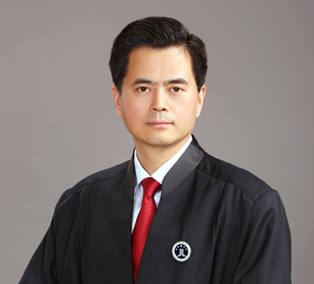CAFC Upholds PTAB Ruling that Patents on Autonomous Driving Tech Are Not Obvious
On February 4, the U.S. Court of Appeals for the Federal Circuit (CAFC)affirmedtwo decisions of the Patent Trial and Appeal Board (PTAB) on related inter partes reviews (IPRs) brought by Quanergy against Velodyne, explaining that the Board’s decision to uphold the validity of the disputed claims was correct considering the objective evidence provided by Velodyne.
Quanergy challenged multiple claims of U.S. Patent No.7,969,558, covering a lidar-based 3-D point cloud measuring system best known for helping autonomous cars sense their surroundings. In its decisions, the PTAB held that several claims of the ’558 patent are not unpatentable as obvious.
Prior Art
The CAFC discussed two prior art references in its ruling. First, the CAFC focused a Japanese Patent Application No. H3-6407 (“Mizuno”) describing a device that emits light toward an object and measures distance to the object by detecting the reflected light.
Second, the CAFC addressed Berkovic, an article published in 2012 which reviews various techniques for measuring distance to objects, including “triangulation and time-of-flight sensing.” Notably, Berkovic points out that “problems arise when using laser time-of-flight sensors to obtain accurate measurements at shorter distances.”
The Underlying Dispute
Quanergy petitioned the PTAB to review the claims of the ’558 patent as obvious over Mizuno. It also argued that Berkovic discusses what was known in the state of the art at the time and what technologies a skilled artisan might use in a system like Mizuno, including time-of-flight technology. The Board held Quanergy failed to show that the challenged claims were unpatentable. In its decision, the Board considered the evidence provided by Velodyne which pointed to “unresolved long-felt need, industry praise, and commercial success.”
On appeal, Quanergy made two noteworthy arguments.
Claim Construction
First, Quanergy argued on appeal that the PTAB erred in its construction of the term “lidar.” Relying onVeritas, Quanergy asserted that the indications in the specification that “lidar”mayinvolve pulsed time-of-flight techniques do not preclude a broader construction that includes other techniques such as triangulation. The Board ultimately disagreed with Quanergy’s argument. The Board distinguished the present facts fromVeritasbecause nothing in the specification inVeritaslimited the disputed phrase. In contrast, here, the specification exclusively focuses on pulsed time-of-flight lidar and no other types. Specifically, the patent describes “measuring distance using a pulsed time-of-flight technique, identifies the shortcomings of existing point cloud systems that collect distance points by pulsing light and detecting its reflection, and discloses a lidar system that collects time-of-flight measurements.”
In light of the intrinsic evidence, the CAFC found Quanergy’s broader construction inconsistent with the specification, and thus unreasonable. The CAFC therefore affirmed the Board’s construction of the term “lidar” to mean pulsed time-of-flight lidar.
Obviousness
Second, Quanergy challenged the PTAB’s obviousness analysis.
On appeal, Quanergy disputed the Board’s findings that Mizuno neither discloses nor suggests the use of a pulsed time-of-flight lidar system. The CAFC acknowledged that the testimony ofbothVelodyne’s and Quanergy’s experts supported the Board’s findings. For example, Quanergy’s expert conceded that Mizuno’s device was not a pulsed time-of-flight lidar system. Quanergy tried to recover on redirect by claiming its expert was describing “only one particular embodiment of Mizuno’s device.” But the Board rejected this argument as “an attempt to draw an arbitrary distinction in the testimony of its expert between one of Mizuno’s figures and Mizuno’s disclosure as whole.” Similarly, the CAFC was unpersuaded and noted that the testimony of Quanergy’s expert on redirect was “incomplete, unspecific, and ultimately conclusory.”
The Board also found that a skilled artisan would not have used pulsed time-of-flight lidar in Mizuno’s short-range measuring device because Berkovic suggests that “the accuracy of pulsed time-of-flight lidar measurements degrades in shorter ranges.” Naturally, the Board was left unpersuaded by Quanergy’s expert’s failure to explain “how or why a skilled artisan would have had an expectation of success” in overcoming the problems in implementing a pulsed time-of-flight sensor into a short-range measurement system such as Mizuno’s that Berkovic identifies. Further, the Board stated Quanergy’s evidence offered to show an expectation of success was “speculation from its expert about the endless possibilities of Mizuno’s teachings.”
Nexus
On appeal, Quanergy also challenged the Board’s presumption of a nexus between the claimed invention and Velodyne’s evidence of an unresolved long-felt need, industry praise, and commercial success. The Board explained that Velodyne provided “ample evidence” that its commercial products “embody the full scope of the claimed invention and that the claimed invention is not merely a subcomponent of those products.” For example, the Board noted Velodyne’s expert had provided a detailed analysis mapping claim 1 of the ’558 patent to each of Velodyne’s commercial products, testimony that Quanergy never disputed. Velodyne also provided new articles describing a long-felt need for a lidar sensor that could capture distance points rapidly in all directions and new articles praising Velodyne on its innovation.
To rebut the presumption of nexus, Quanergy identified a 360-degree horizontal field of view, a wide vertical field of view, and a dense 3-D point cloud as unclaimed features such that Velodyne’s products were not coextensive with the claimed invention. But the Board found those features were “clearly supported by the challenged claims.”
On appeal, Quanergy asserted the Board failed to consider the issue of unclaimed features before presuming nexus. But the CAFC disagreed and stated that there is no dispute that the Board must consider unclaimed features as part of its presumption analysis when they are raised. On the contrary, the CAFC found “the Board’s explanation of how each alleged unclaimed feature results directly from claim limitations—such that Velodyne’s products are essentially the claimed invention—both adequate and reasonable.”
Ultimately, the CAFC affirmed the PTAB’s finding on non-obviousness based on the secondary indicia of non-obviousness showing by the external evidence provided by Velodyne.
-
Previous:
-
Next:
This article has no related articles!






